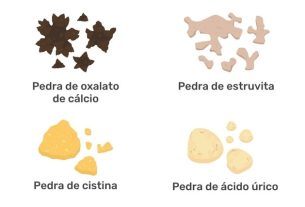Carbinoxamine is an antiallergic agent that helps combat cold and flu symptoms such as fever, headache or runny or stuffy nose, and is generally found in association with other substances, such as paracetamol and phenylephrine.
This medicine is sold in the form of tablets or oral solution under the trade names Naldecon Noite, Benegripe Multi, Fluviral Noite, Neolefrin and Nasaliv, for example.
Carbinoxamine, or carbinoxamine maleate, should be used with the guidance of a general practitioner or otorhinolaryngologist, for the treatment time recommended by the doctor according to the condition to be treated.

What is it for
Carbinoxamine is indicated to alleviate the symptoms of colds and flu, such as fever or headache, and is normally found in association with paracetamol and phenylephrine.
Carbinoxamine works by blocking the action of histamine in the body, which is responsible for the symptoms of a blocked or runny nose, paracetamol has an analgesic and anti-febrile action and phenylephrine has a nasal decongestant effect.
The use of carbinoxamine, paracetamol and phenylephrine must be carried out with the recommendation of a general practitioner or otorhinolaryngologist, for the duration of treatment advised by the doctor.
Make an appointment with a general practitioner in the nearest region:
Taking care of your health has never been easier!
How to drink
Carbinoxamine is found in combination with other substances, in the form of tablets or oral solution.
1. Carbinoxamine tablets
Fluviral Noite, Neolefrin or Naldecon Noite contain 2 types of tablets in the pack, 1 orange tablet with carbinoxamine 4 mg and paracetamol 400 mg, and 1 yellow tablet containing phenylephrine 20 mg and paracetamol 400 mg.
These tablets are only indicated for adults or children over 12 years of age, with a dose of 2 tablets (1 yellow and 1 orange) being generally recommended every 8 hours, not exceeding 3 doses in 24 hours.
The treatment time must be guided by the doctor, and in general, for pain it should not exceed 10 days of treatment, and for fever and flu symptoms, it should not be used for more than 3 days.
2. Carbinoxamine oral solution
The oral solution of carbinoxamine 0.13 mg/mL, phenylephrine 0.33 mg/mL and paracetamol 13.30 mg/mL (Benegripe Multi) is recommended for adults or children over 2 years old.
The normally recommended dose of Benegripe Multi for adults or children over 12 years of age is 30 mL (1 measuring cup), every 6 hours and after meals. You should not exceed 4 doses per day.
The solution for children aged 2 to 12 years must be used every 6 hours and the dose varies according to body weight and must be calculated by the pediatrician.
Possible side effects
The most common side effects of medications containing carbinoxamine are nausea, drowsiness, dizziness, insomnia, dry mouth and nose, hypothermia, loss of appetite, palpitations, nervousness, tremors, vomiting, diarrhea and headache.
More rarely, prolonged use of carbinoxamine medications can cause increased urine volume, shortness of breath, pain, burning or discomfort when urinating, thrombocytopenia, neutropenia, agranulocytosis, hemolytic anemia and methemoglobinemia, increased liver enzymes and medullary aplasia.
Additionally, prolonged use may cause renal papillary necrosis, increased blood pressure, and serious allergic reactions, including redness, small skin blisters, and rash. If any of these reactions occur, discontinue use and seek medical help immediately.
Who cannot use
Carbinoxamine should not be used by pregnant or breastfeeding women. It is also not recommended for children under 2 years old.
Medications containing carbinoxamine are not indicated for people who are allergic to any component of the formula, or who have asthma, peptic ulcers, narrow-angle glaucoma, severe high blood pressure, liver or kidney disease, or who use monoamine oxidase inhibitor medications, such as isocarboxazid and moclobemide.
Carbinoxamine may cause mild drowsiness in some people. Therefore, it is recommended to avoid driving or performing mechanical work that requires attention until this possible reaction is ruled out.
People who are using medicines that depress the central nervous system, such as other antihistamines, antiallergics, tranquilizers, sedatives, anesthetics or muscle relaxants or anticonvulsants, should always talk to a doctor before using medicines containing carbinoxamine.

Sign up for our newsletter and stay up to date with exclusive news
that can transform your routine!
Warning: Undefined array key "title" in /home/storelat/public_html/wp-content/plugins/link-whisper-premium/templates/frontend/related-posts.php on line 12
Warning: Undefined array key "title_tag" in /home/storelat/public_html/wp-content/plugins/link-whisper-premium/templates/frontend/related-posts.php on line 13



